Want a plan that fits your busy day and actually works? Build a strong exercise routine to lose weight at home with only 30 minutes, minimal equipment, and smart habits. You do not need a fancy gym or hours of free time. You just need a plan you can keep.
This guide gives you exactly that. You will get a complete 30 minute routine with clear intervals, a 7 day home plan you can repeat for 4 weeks, and easy food and habit tips that support fat loss without strict rules. It works for beginners and intermediate exercisers. If you have health concerns, check with your doctor first.
Set your expectations early. Aim for a small weekly calorie deficit, about 250 to 500 calories per day, 3 to 5 workouts per week, and more daily movement. That steady mix trims inches without burning you out. Save or print this plan, put it on your wall, and start today.
Set up your home plan so weight comes off safely and steadily
A good setup keeps you consistent. You will move more, stress less, and see results faster. Before your first session, lock in a few basics.
- Goal setting
- Weekly schedule
- Space and gear
- Warm up and cool down
- Safety and form
Keep the process simple, then repeat it.
Choose your goal and timeline
Pick a short, clear goal. You might choose to lose 0.5 to 1 pound per week or fit into your old jeans in 8 weeks. That rate is realistic and safe. It gives your body time to adapt.
Track more than the scale. Note energy, mood, and waist size. Take front and side photos every two weeks with the same angle and light. A modest calorie burn, done daily, beats a few heroic workouts once in a while. Consistency wins.
Make a weekly schedule you can keep
Plan training days like appointments. Beginners do best with 3 days, for example Monday, Wednesday, Friday. Intermediate folks can train 4 to 5 days, for example Monday, Tuesday, Thursday, Saturday, and optional Friday.
- Session length: 20 to 35 minutes
- Daily steps: 7,000 to 10,000 if possible
- Sample blocks: morning after coffee or evening before dinner
- Habit stack: workout after a set trigger, like a work break
Protect at least 1 full rest day each week.
Set up your space and simple gear
You can do everything with bodyweight, but a few tools help.
- Yoga mat or large towel
- Sturdy chair or couch edge
- Backpack with books for rows or squats
- Water bottles as light weights
- Resistance band, single dumbbell, or kettlebell if you have one
Clear about 6 by 6 feet of floor. Keep a towel and water bottle ready.
Warm up and cool down every time
Warm up 5 minutes. Move joints, raise your heart rate, and wake up your core.
- March in place
- Arm circles
- Hip openers
- Inchworms
- Light squats
Cool down 5 minutes. Slow your breath and release tight spots.
- Slow breathing, in through nose, out through mouth
- Calf stretch
- Quad stretch
- Hamstring stretch
- Chest opener
Move with control. Ease in. Ease out.
Safety and form
Use a 1 to 10 effort scale. Work at 6 to 8 for intervals unless noted. Stop if you feel sharp pain. Keep joints stacked, ribs down, and core braced. Exhale on the effort. Keep water nearby. Wear shoes with cushion if you are on a hard floor.
30 minute exercise routine to lose weight at home, no equipment needed
This follow along session uses intervals to build strength and raise your heart rate. No gear is required, but you can hold a light weight for extra load if you want.
Structure:
- Warm up, 5 minutes
- Main workout, 18 minutes
- Cool down, 5 to 7 minutes
Main workout split:
- Cardio circuit, 6 minutes
- Strength circuit, 6 minutes
- Core finisher, 6 minutes
Work for 40 seconds, rest 20 seconds. Repeat each mini circuit twice. Low impact swaps and advanced options are listed in each section.
Fat burning cardio circuit
3 moves, 40 seconds on and 20 seconds rest. Repeat twice.
- March or jog in place with arms pumping
Low impact: high knees marching with a brisk arm swing.
Coaching: land soft, keep a tall chest, look forward. - Skater steps side to side
Low impact: step behind without a hop.
Coaching: reach the back foot lightly, keep knees soft, hips square. - Fast bodyweight good mornings or hip hinge sweeps
Coaching: hinge at hips, back flat, soft knees. Sweep arms forward as you stand tall.
Pace stays brisk. Breathe steady. Keep control.
Total body strength circuit
3 moves, 40 seconds on and 20 seconds rest. Repeat twice.
- Squat to chair or air squat
Add a backpack goblet hold for more load.
Coaching: push hips back, knees track over toes, chest up. - Incline push up on counter or chair
Floor push up for advanced.
Coaching: body in a straight line, hands under shoulders, exhale as you press. - Backpack bent over row or band row
Coaching: hinge at hips, squeeze shoulder blades, pause at the top.
Use slow, controlled reps. Exhale on the effort. Keep your core braced.
Core and stability finisher
3 moves, 30 to 40 seconds on and 20 seconds rest. Repeat twice.
- Dead bug or heel taps
Press your low back gently into the floor. Move opposite arm and leg with control. - Side plank hold
Knees bent for easier, straight legs for harder. Stack elbow under shoulder, keep neck neutral. - Glute bridge with pause
Press through heels, squeeze glutes at the top for a 2 second pause.
Keep breathing. Avoid neck strain. Quality over speed.
Easy and advanced modifications
- Low impact: step instead of jump, use a higher incline for push ups, shorten work to 30 seconds.
- Advanced: add light dumbbells, add one extra round, or change to 45 seconds work and 15 seconds rest.
- Rule of thumb: keep good form first, speed second.
This session is your base. Repeat it 2 to 4 times per week inside the larger plan below.
7 day home workout plan you can repeat for 4 weeks
This layout balances effort and recovery. The structure stays the same week to week, and you will add small progress steps as you go.
- Day 1: HIIT cardio and core
- Day 2: Upper body strength and steps
- Day 3: Active recovery and mobility
- Day 4: Lower body strength and intervals
- Day 5: Total body circuit
- Day 6: Long walk or easy bike
- Day 7: Rest and stretch
Keep sessions between 20 and 35 minutes on training days. Mobility days can be 10 to 20 minutes. For busy weeks, use the time saving options below. For beginners, use the low impact plan.
Sample weekly schedule with rest and active recovery
- Day 1, Monday: Cardio intervals plus core, 25 to 30 minutes
- Day 2, Tuesday: Upper body push pull and a 15 minute walk
- Day 3, Wednesday: Mobility flow, easy stretching, 10 to 15 minutes
- Day 4, Thursday: Lower body strength plus short intervals, 25 to 35 minutes
- Day 5, Friday: Total body circuit, 25 to 30 minutes
- Day 6, Saturday: 30 to 60 minute easy walk or bike for steps and sunlight
- Day 7, Sunday: Rest and gentle stretch, 10 minutes
If your week starts on a different day, shift the plan. Keep at least one full rest day.
Progressive overload, make it a little harder each week
Use three simple levers:
- Add reps or seconds
- Add load with a backpack or dumbbell
- Add a round
Week 1: set your base.
Week 2: add 1 to 2 reps per set.
Week 3: extend work by 5 seconds per interval.
Week 4: keep the same volume, improve form or speed.
Week 5: take a lighter deload week if repeating.
Small changes keep progress moving without exhaustion.
Time saving options for busy days
Two quick formats keep you on track.
- 12 minute EMOM (every minute on the minute)
Minute 1: 12 squats
Minute 2: 8 incline push ups
Minute 3: 12 backpack rows
Repeat for 4 rounds, then a 2 minute cool down. - 15 minute AMRAP (as many quality rounds as possible)
8 squats, 6 push ups, 10 hip hinges, 8 dead bugs per side.
Move steady for 15 minutes with clean form. Add a 3 minute warm up and 2 minute cool down.
Both options stay short, but count as a real session.
Low impact plan for beginners or joint pain
- Swap jumps for steps
- Use incline push ups
- Reduce squat depth
- Slow the tempo and control the range
- Keep effort at 6 to 7 out of 10
Use soft flooring and supportive shoes. Stop moves that cause sharp pain. If pain persists, see a qualified pro.
Eat, track, and recover so the scale moves and stays down
You do not need to count every calorie to lose weight. Aim for a modest calorie deficit and simple meals that fill you up. Protein, produce, and planned carbs do most of the work. Track progress in more than one way so you see wins each week. Sleep and stress matter too.
Simple nutrition rules that support fat loss
- Protein target: about 0.6 to 0.8 grams per pound of body weight per day if you are healthy. Example: 150 pounds equals 90 to 120 grams daily.
- Plate method: half veggies, one quarter protein, one quarter carbs, plus a thumb of healthy fats.
- Drink water with meals and between meals.
- Limit sugary drinks to rare treats.
- Plan for 80 to 90 percent whole foods. Leave room for favorites in small portions.
Build meals you enjoy. Think eggs and fruit, Greek yogurt bowls, chicken and rice with veggies, chili with beans, tofu stir fry, salmon with potatoes and salad.
How to track progress without obsession
Check 3 to 5 points weekly:
- Body weight
- Waist at the belly button
- Photos in the same light
- Step count
- Workout checkmarks
Weigh at the same time 2 to 3 times per week and average it. Expect normal ups and downs. Celebrate non scale wins like better sleep, less joint ache, or a stronger plank. Those changes come before big moves on the scale.
Sleep, stress, and recovery tips
- Aim for 7 to 9 hours of sleep
- Create a wind down routine, dim lights, cooler room
- Walks, slow breathing, or light stretching for stress
- At least one full rest day per week
- A lighter week every 4 to 6 weeks
Recovery helps your hormones, your appetite, and your effort levels. It is the hidden part of fat loss most people skip.
Motivation and habit tricks to stay consistent
- Lay out your clothes the night before
- Stack habits, for example start your workout after coffee
- Put workouts on your calendar with reminders
- Use a checklist or a wall tracker
- Set tiny goals on tough days, a 10 minute mini session beats zero
Progress is a chain of small wins. Keep the chain going.
Conclusion
You have a clear path. Set up your space, follow the 30 minute routine, use the 7 day plan, and keep food and sleep simple. Start with the next 10 minutes and build from there. Pick a start day, take a before photo, and check in after two weeks. Bookmark this plan, share it with a friend, and begin the first warm up now. Stay steady and the exercise routine to lose weight at home becomes a habit you can keep.
Related post: Walking to Reduce Belly Fat
Exercise Routine to Lose Weight at Home FAQs:
How many days a week should I work out to lose weight?
Aim for 4 to 6 days per week. Do 3 to 4 days of strength training and 2 to 4 days of cardio. Keep at least 1 rest day. Consistency matters more than long sessions.
How long should each workout be?
Target 25 to 45 minutes. Short on time, do 15 to 20 minutes of high effort intervals. Quality beats duration when you push hard and keep form sharp.
What’s the best at-home workout split for fat loss?
Use a full-body plan 3 days per week, then add 2 days of cardio or HIIT. Or try an upper, lower, full-body split. Keep a simple plan you can repeat.
Which exercises burn the most calories at home?
Compound moves work best. Do squats, lunges, push-ups, rows, hip hinges, burpees, mountain climbers, jumping jacks. Combine them in circuits to raise your heart rate.
Do I need equipment?
No, but simple gear helps. A pair of dumbbells or resistance bands, a mat, and a door anchor cover most exercises. Add a jump rope for quick cardio.
How should I warm up and cool down?
Warm up 5 minutes with light cardio and dynamic moves, like leg swings and arm circles. Cool down 3 to 5 minutes with easy walking and gentle stretches. This reduces injury risk and soreness.
What’s a solid beginner routine?
Start with 3 days per week. Do 3 rounds of 8 to 12 reps each: bodyweight squats, glute bridges, push-ups on knees or wall, rows with bands, dead bugs or planks. Add 10 minutes of brisk walking or marching in place.
How do I structure a weekly plan?
Example week: Mon strength, Tue cardio or intervals, Wed rest or light walk, Thu strength, Fri cardio or intervals, Sat strength, Sun rest. Adjust days to fit your schedule, not the other way around.
Is HIIT better than steady cardio?
Both help. HIIT saves time and raises fitness fast, use it 1 to 3 times per week. Steady cardio helps recovery and burns calories with less stress. Mix them to avoid burnout.
Can I target belly fat with specific exercises?
No. You lose fat from your whole body, pattern set by genetics. Train your core for strength and posture, not spot reduction. Diet and total activity drive fat loss.
How important is strength training for weight loss?
Very. Muscle preserves your metabolism and improves shape as you lose fat. Aim for full-body strength 2 to 4 times per week.
How many sets and reps should I do?
For fat loss, do 2 to 4 sets of 8 to 15 reps per exercise. Choose a weight or band tension that feels hard by the last 2 reps, while keeping form. Rest 30 to 90 seconds between sets.
What if I only have 20 minutes?
Use circuits. Pick 4 to 6 moves, do 40 seconds work and 20 seconds rest, repeat for 3 to 5 rounds. Keep transitions tight to hold intensity.
How fast should I expect results?
You can feel better in 1 to 2 weeks. Visible changes often show in 4 to 8 weeks with steady training and calorie control. Track inches, photos, and strength gains, not just scale weight.
How do I break a plateau?
Increase total weekly volume, add a set, a session, or more steps. Raise intensity, slow eccentrics, or shorten rests. Tighten nutrition, more protein and fiber, fewer liquid calories. Get 7 to 9 hours of sleep.
What’s the role of diet in home workouts?
You lose weight when you eat fewer calories than you burn. Prioritize protein, about 0.7 to 1.0 grams per pound of goal body weight, plenty of veggies, and high fiber carbs. Keep treats small and planned.
How do I track calorie burn at home?
Wearables estimate, but they can be off. Use them for trends, not exact numbers. Better, track your weight, waist, and how your clothes fit, then adjust food and activity.
Is morning or evening best?
The best time is the time you will stick to. Morning helps with routine. Evening can feel stronger after meals. Consistency beats timing.
What if my knees or back hurt?
Skip high impact jumps, use low impact options like step backs, glute bridges, and incline push-ups. Strengthen hips and core, keep form strict. If pain persists, see a licensed pro.
How do I stay motivated at home?
Set small process goals, like 4 workouts this week. Lay out gear the night before. Use a simple plan, track checkmarks, and celebrate streaks. Join a buddy or online group for accountability.
Can I walk and still lose weight?
Yes. Aim for 7,000 to 10,000 steps per day if possible. Add brisk walks after meals for 10 to 15 minutes. Walking supports recovery and fat loss.
Should I do cardio or weights first?
If fat loss is the goal, do weights first when fresh, then cardio. If you train intervals hard, separate them by several hours or do them on alternate days.
How much rest do I need?
Take 1 to 2 full rest days weekly. In workouts, rest 30 to 90 seconds between sets, longer after tough compound moves. Sleep enough, recovery drives progress.
Do I need to change my routine often?
Keep the same main moves for 4 to 6 weeks. Add small progressions, more reps, more load, slower tempo, or less rest. Then swap variations to keep engagement high.
What progress should I track?
Track workouts done, weights used, reps, and time. Measure waist, hips, and thighs every 2 to 4 weeks. Take front, side, and back photos under the same light. Use these to guide changes.


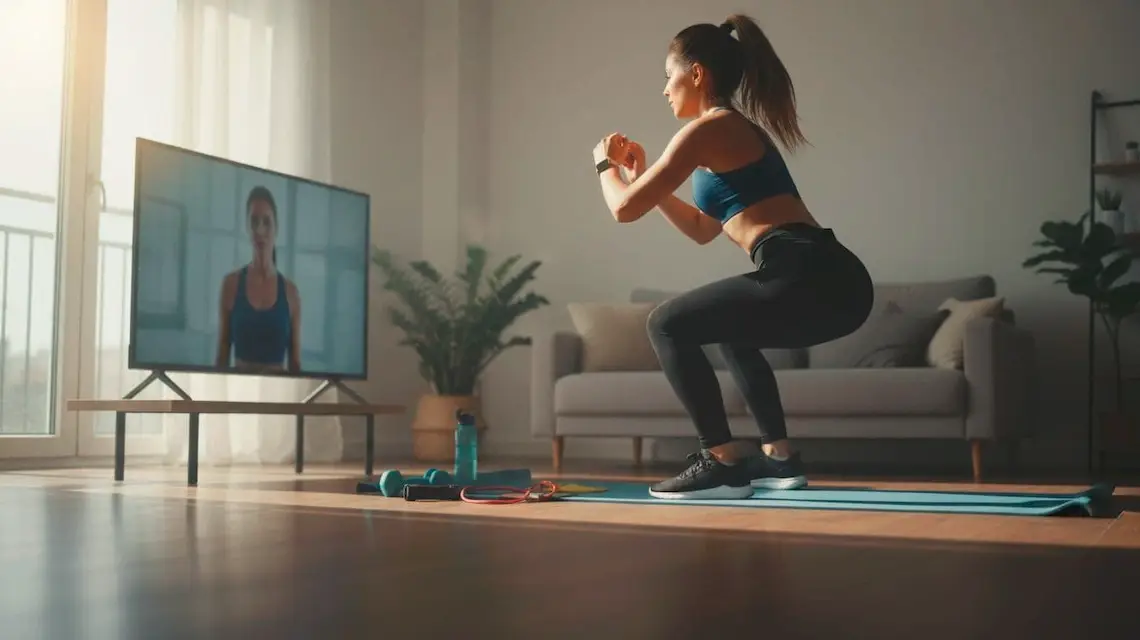

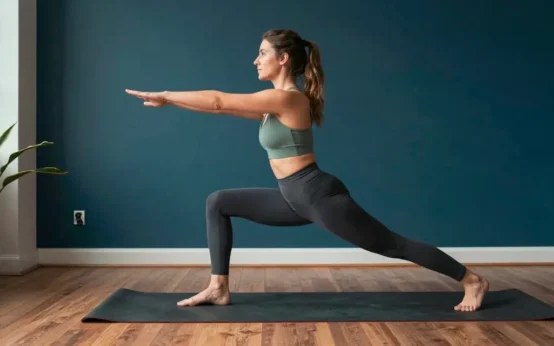 Beginner Cardio Workout at Home
Beginner Cardio Workout at Home 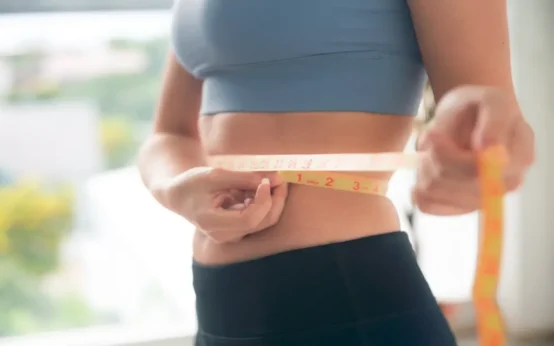 How to Start a Weight Loss Program
How to Start a Weight Loss Program  What Vitamin Deficiency Makes It Hard to Lose Weight?
What Vitamin Deficiency Makes It Hard to Lose Weight? 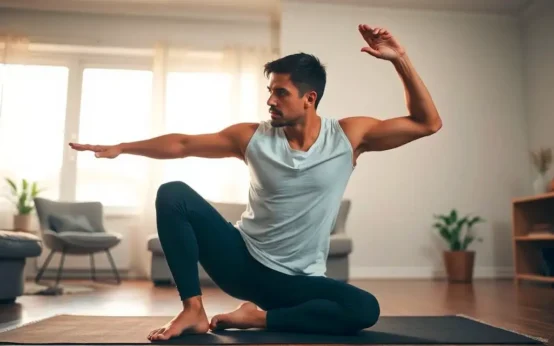 10 Stretching Exercises to Increase Height
10 Stretching Exercises to Increase Height 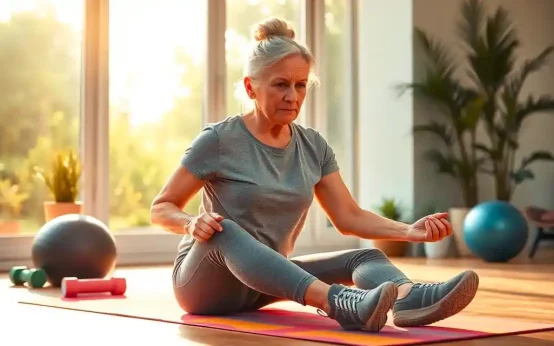 Menopause Workout: A Simple, Strong Plan
Menopause Workout: A Simple, Strong Plan 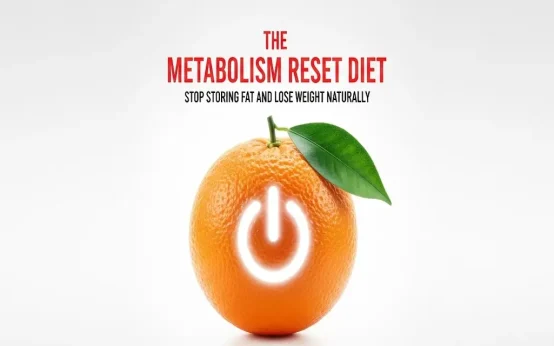 Improve Fat Burning With a Metabolism Reset Diet
Improve Fat Burning With a Metabolism Reset Diet